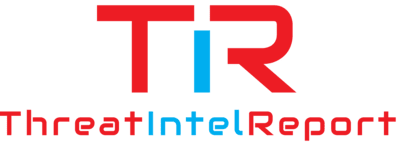In September 2024, U.S. authorities raised alarms over a significant threat that has been quietly gaining momentum this year—RansomHub, a ransomware-as-a-service (RaaS) platform that has been targeting vital sectors across the globe. Since its inception in February 2024, RansomHub has compromised over 210 victims, infiltrating critical industries including utilities, government services, and manufacturing. This development represents a marked shift in ransomware tactics, underscoring the urgent need for organizations to bolster their defenses against this rapidly evolving threat.
RansomHub: The Ransomware-as-a-Service Model
RansomHub is not just another strain of ransomware; it operates on a Ransomware-as-a-Service (RaaS) model, where cybercriminals rent the platform to carry out their own attacks. This business-like approach has made it an efficient and successful threat. Not only does it enable attackers with little technical knowledge to deploy highly sophisticated attacks, but it also provides them with the tools to encrypt, exfiltrate, and demand ransoms from victims—making RansomHub an attractive option for both seasoned and novice cybercriminals.
Noteworthy Incidents
The victims of RansomHub are spread across multiple industries, but critical infrastructure sectors such as water utilities, wastewater systems, and manufacturing have been disproportionately affected. These sectors are often targeted because of their reliance on outdated technology and their need for operational continuity, which increases the likelihood of ransom payments.
Since February 2024, this threat actor has caused widespread disruption, leading to significant financial losses and threatening essential services. The attackers have not only encrypted data but also stolen sensitive information, which they use as leverage in double-extortion schemes.
Mitigation Strategies
U.S. agencies, including the FBI, CISA, and the Department of Health and Human Services, have issued guidance on defending against RansomHub. To mitigate the risk of falling victim to this ransomware, organizations should implement the following practices:
- Patch Management: Ensure that operating systems, software, and firmware are up to date to close known security gaps.
- Multi-Factor Authentication (MFA): Use phishing-resistant MFA mechanisms, particularly hardware tokens or biometric methods, to prevent unauthorized access.
- Phishing Awareness Training: Regularly train staff to recognize phishing attacks, which remain a common initial attack vector in ransomware campaigns.
- Data Backups: Maintain regular, encrypted backups that are stored offline to ensure that data can be restored in the event of an attack without having to pay a ransom.
- Incident Response Plan: Develop and frequently test an incident response plan tailored to ransomware, ensuring that stakeholders know their roles in the event of an attack.
The Evolving Threat Landscape
Ransomware has become an ever-present danger for industries worldwide, and with platforms like RansomHub, the barrier to entry for deploying these attacks has been lowered significantly. Attackers no longer need to be experts in malware development; they simply subscribe to a service and deploy pre-configured attack packages.
This model has led to an explosion of ransomware attacks, with an increasing number of sectors being hit. The rise of double-extortion tactics—where both data encryption and data theft are used to pressure victims into paying ransoms—further complicates the situation. Even if organizations have backups in place, they still face the risk of sensitive data being leaked or sold on dark web marketplaces.
As RansomHub continues to grow in prominence, it’s essential for organizations to remain vigilant and proactive in their cybersecurity efforts. By adopting the recommended mitigation strategies, companies can reduce their risk of falling victim to these types of ransomware attacks.
With over 210 confirmed victims, RansomHub is a stark reminder that the ransomware threat landscape is continually evolving. As attackers find new ways to exploit vulnerabilities, organizations must strengthen their defenses and stay ahead of the curve to protect their assets and data.
Further Reading:
